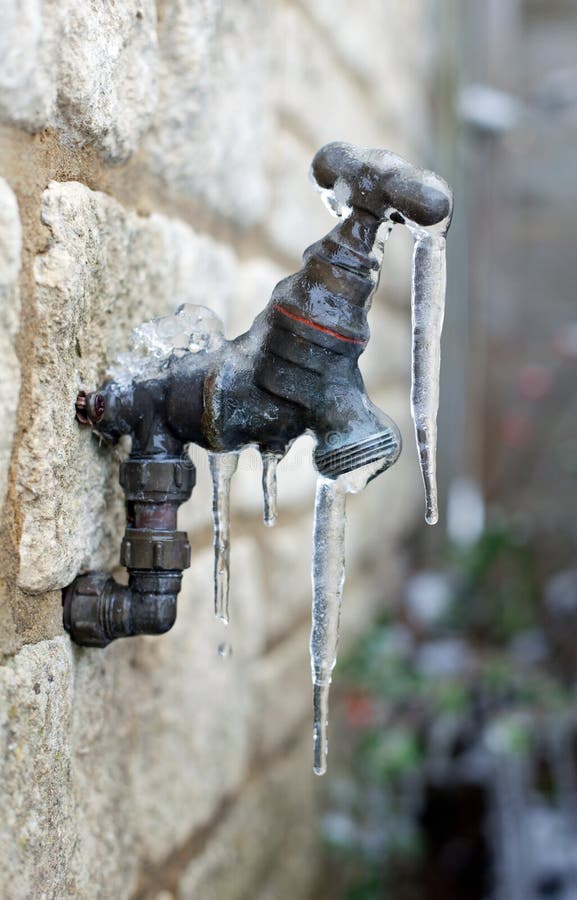Preventing Frozen Pipes in Winter: Professional Advice
Preventing Frozen Pipes in Winter: Professional Advice
Blog Article
The writer is making a few great pointers related to How to Prevent Your Pipes From Freezing as a whole in this great article followed below.

Winter can damage your plumbing, specifically by freezing pipes. Below's exactly how to prevent it from occurring and what to do if it does.
Introduction
As temperature levels drop, the danger of frozen pipes rises, potentially leading to expensive fixings and water damage. Recognizing how to avoid icy pipes is crucial for homeowners in cold environments.
Recognizing Icy Pipelines
What creates pipelines to freeze?
Pipelines ice up when revealed to temperatures below 32 ° F (0 ° C) for prolonged periods. As water inside the pipes ices up, it increases, taxing the pipeline wall surfaces and possibly triggering them to rupture.
Threats and problems
Icy pipelines can bring about supply of water interruptions, home damage, and pricey repair services. Ruptured pipelines can flooding homes and create substantial architectural damages.
Indications of Frozen Pipeline
Determining frozen pipes early can stop them from rupturing.
How to recognize icy pipelines
Search for lowered water flow from taps, unusual smells or sounds from pipes, and noticeable frost on exposed pipelines.
Avoidance Tips
Protecting at risk pipes
Wrap pipelines in insulation sleeves or make use of heat tape to secure them from freezing temperature levels. Focus on pipes in unheated or external locations of the home.
Heating techniques
Keep interior areas properly heated up, particularly locations with pipes. Open up closet doors to permit cozy air to flow around pipes under sinks.
Protecting Outside Plumbing
Yard pipes and exterior faucets
Disconnect and drain pipes garden pipes prior to wintertime. Mount frost-proof faucets or cover outdoor faucets with shielded caps.
What to Do If Your Pipes Freeze
Immediate actions to take
If you suspect icy pipelines, maintain faucets open up to soothe pressure as the ice thaws. Utilize a hairdryer or towels taken in warm water to thaw pipes slowly.
Long-Term Solutions
Structural modifications
Think about rerouting pipelines away from outside walls or unheated locations. Add additional insulation to attics, basements, and crawl spaces.
Updating insulation
Invest in high-quality insulation for pipes, attic rooms, and walls. Appropriate insulation aids maintain consistent temperature levels and reduces the risk of icy pipelines.
Verdict
Avoiding icy pipelines calls for aggressive measures and quick reactions. By comprehending the reasons, indicators, and safety nets, home owners can shield their pipes throughout winter.
6 Proven Ways to Prevent Frozen Pipes and Protect Your Home
Disconnect and Drain Garden Hoses
Before winter arrives, start by disconnecting your garden hoses and draining any remaining water. Close the shut-off valves that supply outdoor hose bibs and leave the outdoor faucet open to allow any residual water to drain. For extra protection, consider using faucet covers throughout the colder months. It’s also important to drain water from any sprinkler supply lines following the manufacturer’s directions.
Insulate Exposed Pipes
Insulating your pipes is an effective way to prevent freezing. Pipe insulation is readily available at home improvement stores and is relatively inexpensive. Pay close attention to pipes in unheated areas such as the attic, basement, crawl spaces, or garage. Apply foam insulation generously to create a buffer against the cold. You can also wrap your pipes in heat tape or thermostat-controlled heat cables for added warmth.
Seal Air Leaks
Inspect your home for any cracks or openings that could let in cold air. Seal any holes around the piping in interior or exterior walls, as well as the sill plates where your home rests on its foundation. Additionally, make sure to keep your garage door closed unless you’re entering or exiting. Leaving it open creates a significant air leak that can lead to frozen pipes.
Allow Warm Air Circulation
During cold snaps, it’s essential to allow warm air to circulate evenly throughout your home. Leave interior doors ajar to promote better airflow. Open kitchen and bathroom cabinets to help distribute heat consistently around the rooms. If you have small children or pets, be sure to remove any household chemicals or potentially harmful cleaners from open cabinets for safety.
Let Faucets Drip
A small trickle of water can make a big difference in preventing ice formation inside your pipes. When temperatures drop significantly, start a drip of water from all faucets served by exposed pipes. This continuous flow helps prevent the water from freezing. Additionally, running a few faucets slightly can relieve pressure inside the pipes, reducing the chances of a rupture if the water inside does freeze.
https://choateshvac.com/6-proven-ways-to-prevent-frozen-pipes-and-protect-your-home/

Do you like reading up on How to prepare your home plumbing for winter weather? Create feedback further down. We would be happy to know your ideas about this blog entry. Hoping to see you back again before long. For those who enjoyed our post if you please consider to pass it around. I thank you for reading our article about Prevent Frozen Pipes .
Explore Report this page